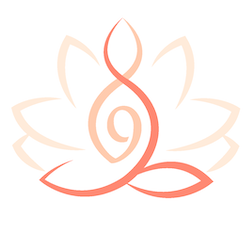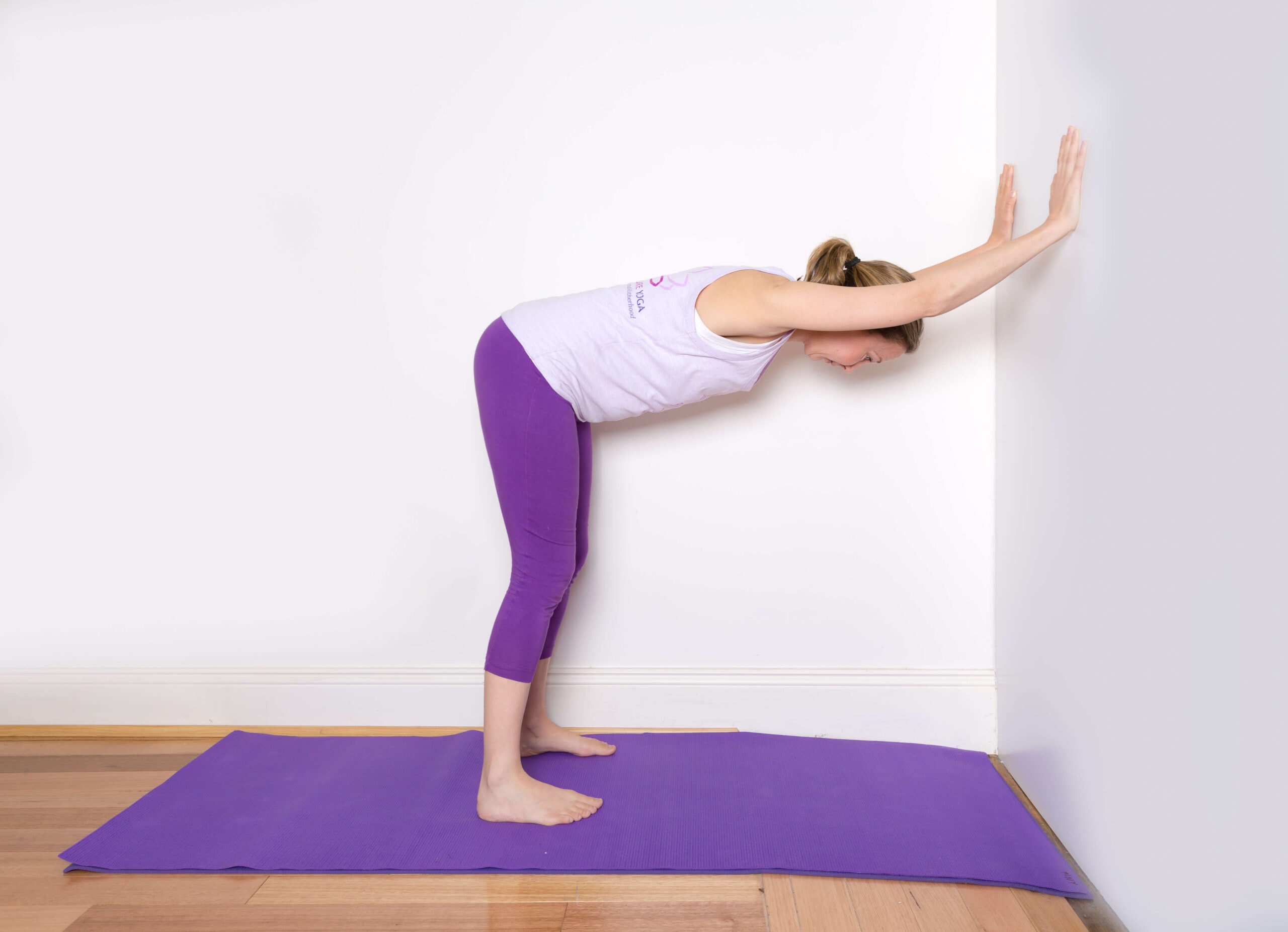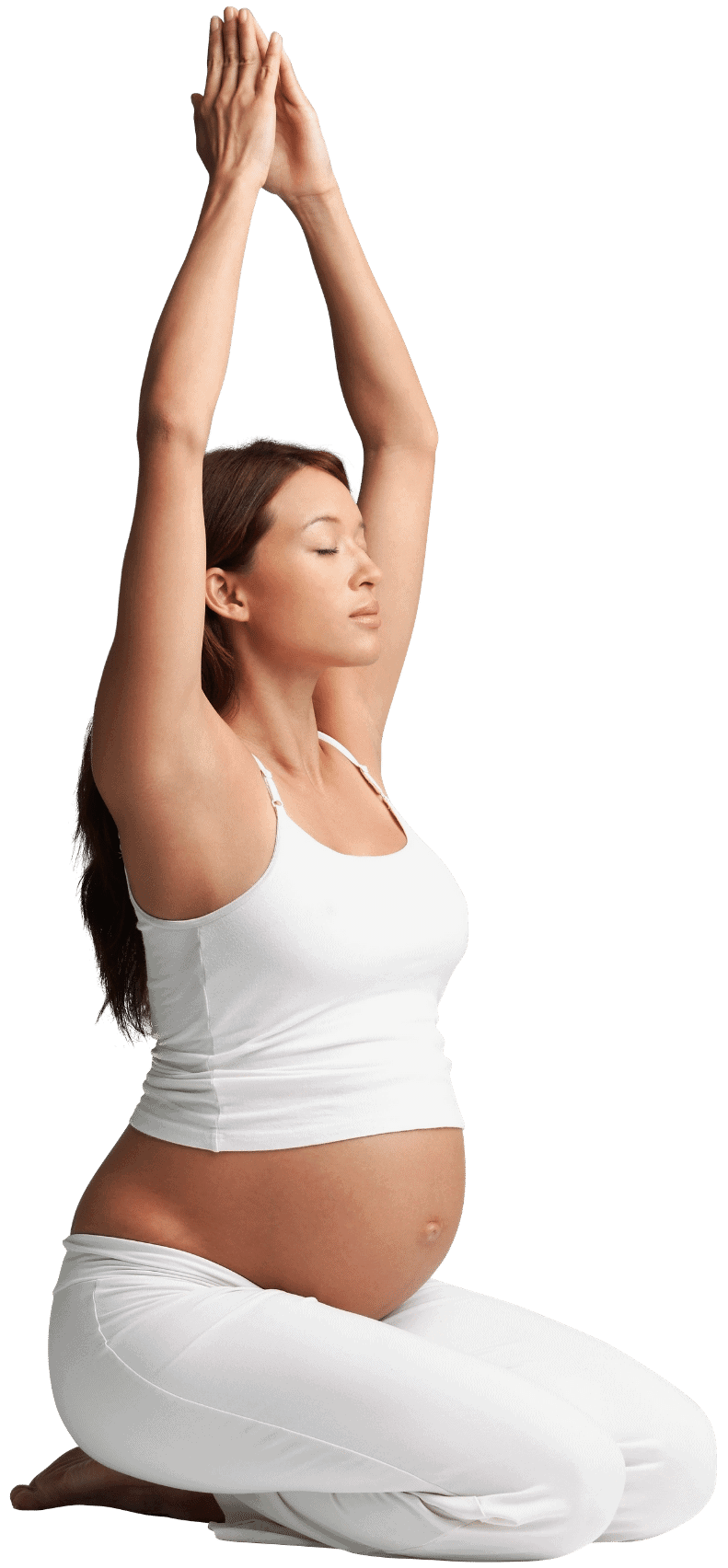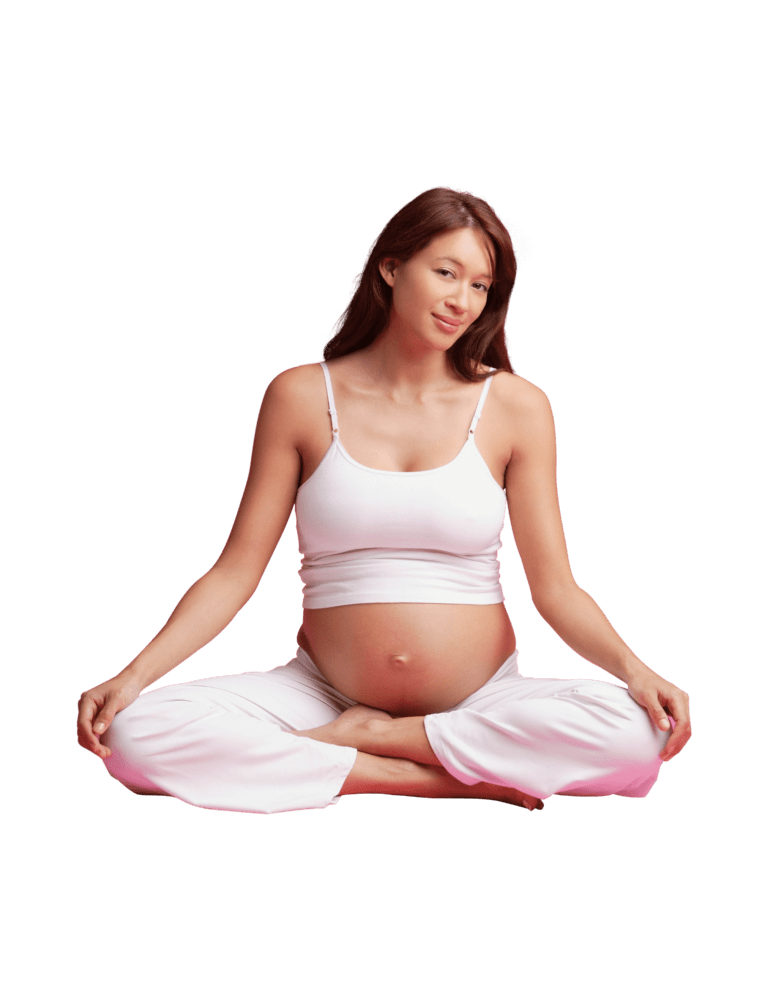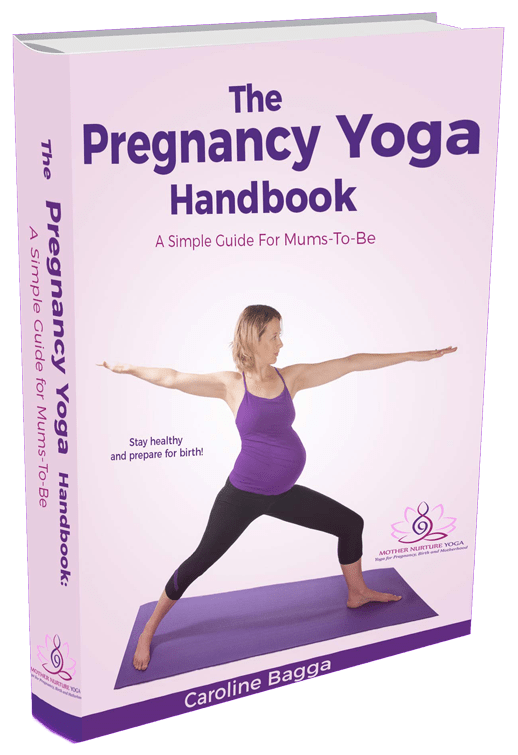If you have lower back pain in pregnancy you’re not alone! Research suggests back pain affects up to 50% of pregnant women. But what causes it? And more importantly, how can you get some relief?
During pregnancy, your centre of gravity changes as your baby grows. At around 21 – 26 weeks, your uterus rises from inside the pelvic cavity to above the belly button. Average weight gain during pregnancy is 12 – 15kg, so we’re dealing with additional weight AND a uterus and baby this is slung forwards in the middle of the body.
Women often change their posture as they try to restore their altered centre of gravity. The result? A larger than normal lordosis (inward curve) of the lower back, and the well-known ‘pregnancy waddle’ with feet pointing outwards.
Add to that the hormonal changes in the body, which means the ligaments are looser, providing less support and stability to the pelvis.
A sedentary lifestyle doesn’t help! If you spend hours sitting in a chair this results in tight hip flexors, contributing to muscle imbalances and lower back pain.
Here’s 5 tips for pregnancy back pain relief!
Tip 1: Check your pregnancy posture
A super simple way of checking your posture is to sit in an imaginary chair at the wall. Here’s how:
- Position your feet hip width apart and about a foot length away from the wall. Make sure the feet are parallel with the toes turning slightly in and heels turning slightly out
- Rest your buttocks and back against the wall
- Slide your hand between your lower back and the wall – how much gap is there?
- Now remove your hand and see if you can imprint your lower back against the wall. Hold it like that and notice if you can feel your lower abdominal muscles lightly engaging, like you’re giving your baby a gentle hug back towards your spine
- Now bring your arms up to cactus arms and see if you can maintain the contact between the lower back and the wall. The cactus arms position is really good for stretching and strengthening the shoulders and upper back.
Now move away from the wall into a regular standing position and try to re-create that straight spine with the tailbone lengthening down towards the floor and your baby getting a gentle hug, while your shoulders are held back. Check your feet are still hip width and parallel.
Tip 2: Half dog at wall – instant lower back pain relief!
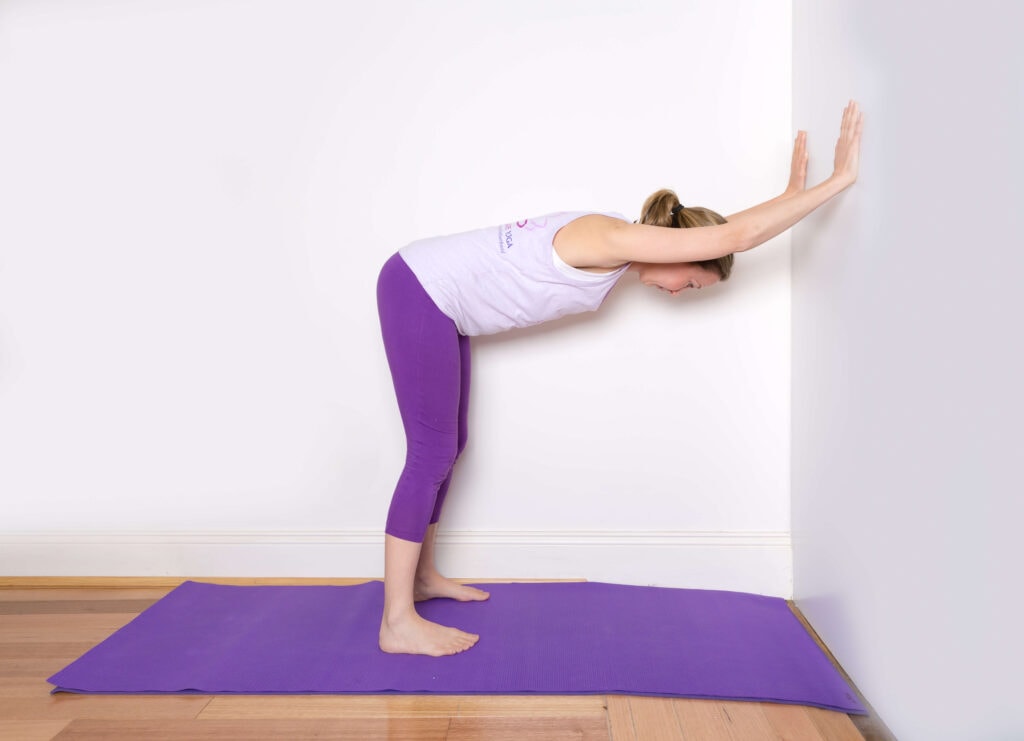
This is one of the easiest and most effective yoga poses for lower back pain. It can be practiced safely at any time during pregnancy and almost anywhere! You don’t even need a wall – you can use a chair, desk, kitchen workbench or side of a cot. It’s a great way to stretch and lengthen the spine.
Here’s how to come into the pose:
- Place your hands shoulder-width apart on the wall
- Walk your feet back until your upper body comes parallel to the floor
- To relieve lower back pain, think about lengthening your tailbone away from head and then down towards your heels
- If you feel tightness in the middle or upper back you can try walking your hands a little higher up the wall to target that tightness
- Make any moves that feel good – sway the hips from side-to-side or bend the knees
Tip 3: Child’s pose to stretch your hips, back and calm your mind
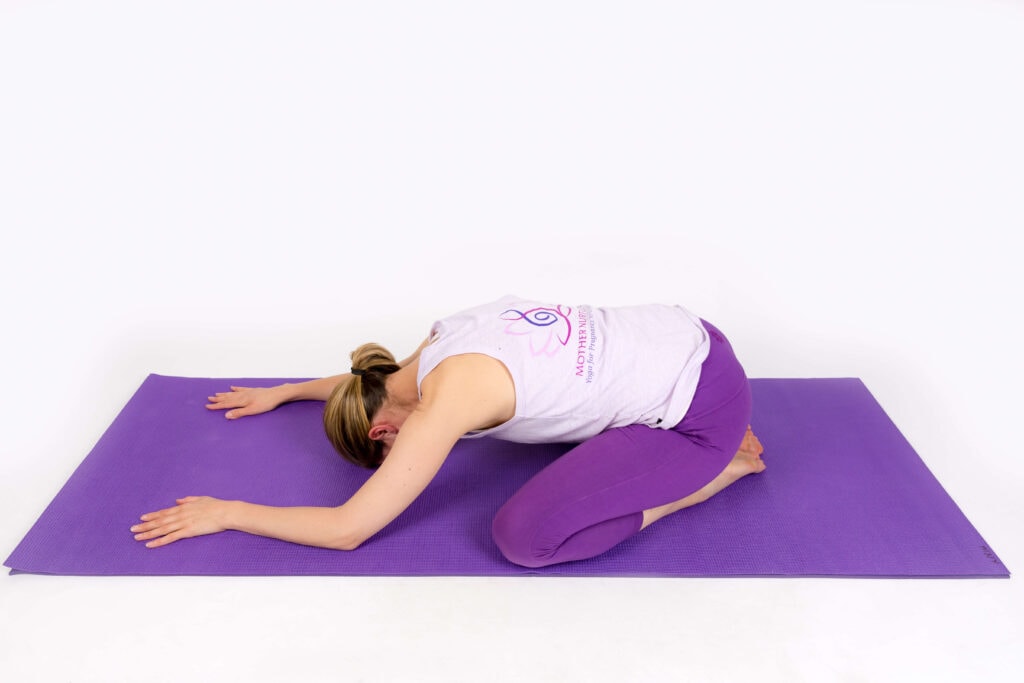
You’ll need a yoga mat, towel or carpet to practice this pose which is great for calming your mind as well as stretching the hips and back and neck.
Here’s how to do Child’s pose:
- Come down to kneeling, with your knees wide and your big toes touching
- Fold forwards, taking your forehead to the mat. If you can’t reach the mat with your forehead, you can use a yoga block, cushion or make a pillow with your hands.
This can be practiced as a restorative yoga pose staying here for up to five minutes. Place a firm bolster between your legs and rest your upper body and head sideways on it. Just make sure that you’re not squishing your baby bump into the bolster.
This pose is safe to do at any stage during pregnancy. However, it is contraindicated if you have any pelvic issues.
If you experience any dizziness or nausea when you bring your head down, you can keep your head up, by cupping your hands around your chin/face.
Tip 4: Low lunge for tight hip flexors
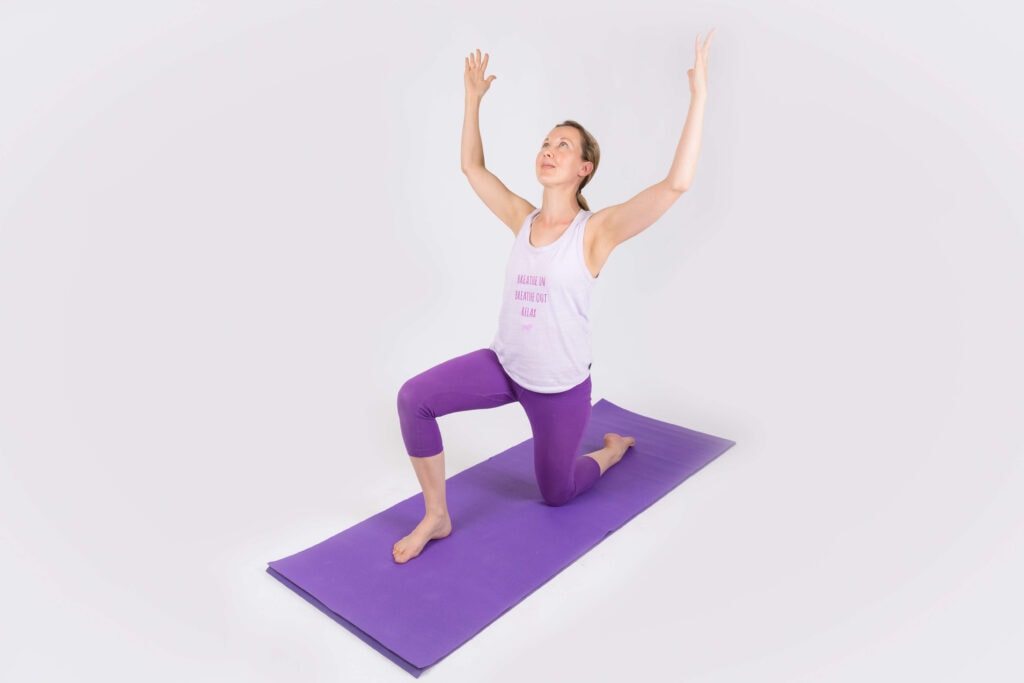
Kneeling, low lunges are a great way to stretch out tight hip flexors which contribute towards pregnancy back pain.
Here’s how:
- From kneeling, step your right leg forward, bringing your leg to a right angle, with your foot directly underneath your right knee. If your knee is uncomfortable, place a cushion or folded towel underneath it
- Lengthen your lower back, tucking your tailbone down towards the ground. Think about lifting your upper body ‘out’ of your hips
- You can either leave your hands resting on your knee, or lift your arms up to the ceiling with your hands wide and palms facing each other. This will give your spine a greater stretch
- If it’s comfortable on your neck and you feel stable, you can look up
- Stay for 3-5 breaths and then repeat on the other side
Tip 5: Safe self-massage
One of my favourite things to have on hand is a small, hard ball. A tennis ball will do but you can also buy a ‘silicone massage ball’ from large retail stores for around the price of a coffee.
You can use this ball to target any soreness or pain in your lower back and hips. Simply place the ball against the wall and then place your back against the ball and gently roll it up and down or side-to-side. Unlike a massage, you’re in control of the pressure and the spots that you can work on. It’s a real lifesaver!
Conclusion
If you’re feeling lower back pain in your pregnancy the great news is there’s definitely things you can do to help. Good posture is key to being pain-free, but a great stretch and self-massage will do wonders not only for your body but for your mind as well.
One caution – if your pain is not isolated to just your lower back, or is in need of more than just a good stretch and massage, please seek professional help. One in five pregnant women are affected by Pelvic Girdle Pain, which is an uncomfortable inflammation in the pelvic joints – previously known as Sacroiliac Joint Pain and Pubic Symphysis Dysfunction. These conditions need to be diagnosed by a professional bodyworker such as a Physiotherapist, Chiropractor or Osteopath.
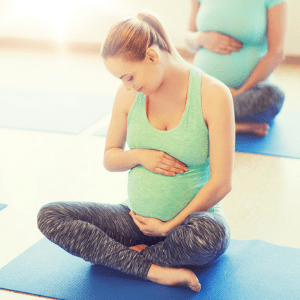
Relieve your back pain with a pregnancy yoga class.
